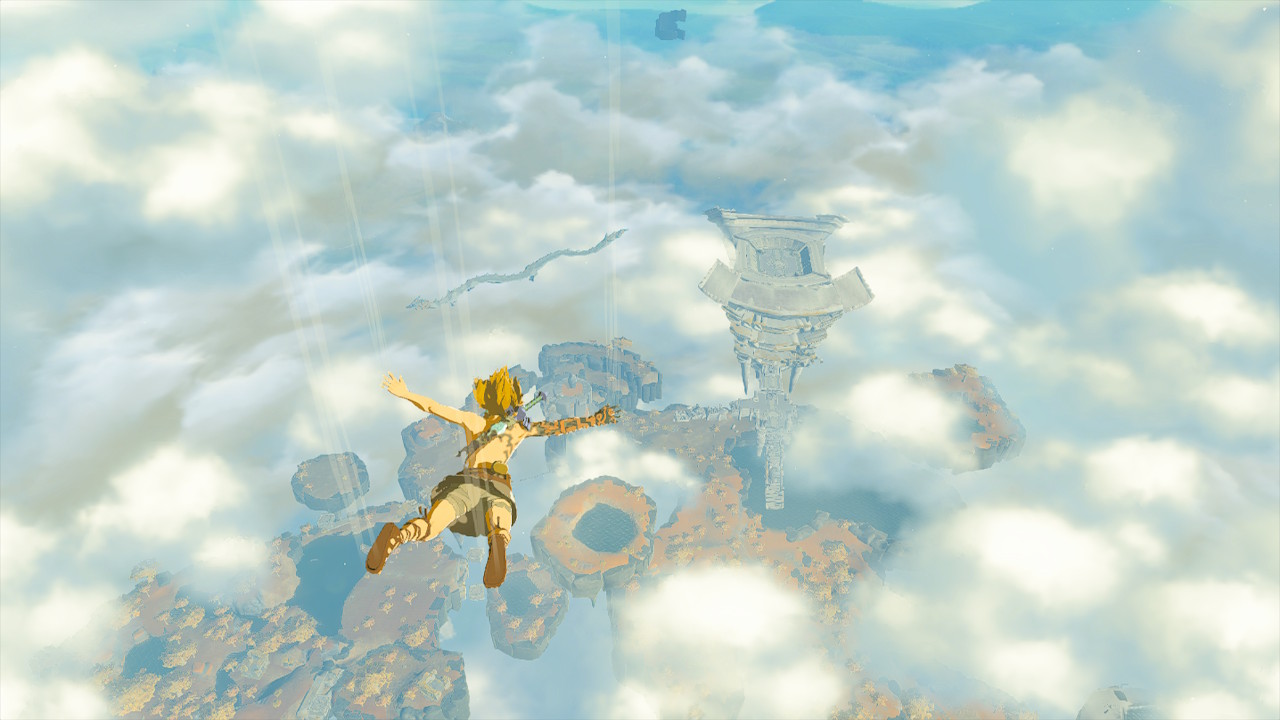
Time played: 70 hours
Platform: Nintendo Switch
In the sky above Hyrule, a dragon is turning in great graceful loops. Its lion-like yellow mane flutters and trails in the wind as it threads a path through clouds, drawing my eye from the green plains to the floating islands that dot the air above. I stand and watch from a distance until the creature dives groundward, and I lose sight of it; perhaps it flies low into a canyon or through one of the chasms that pockmark the landscape, acting as entrances to the dark cavernous underworld beneath the crust of the earth.
I wait for a moment to see if the dragon will emerge again. When it doesn’t, I continue my long walk to Kakariko village, the next stop in my search for Princess Zelda. The dragon isn’t something to dwell on; it’s just another of the many wondrous sights in The Legend of Zelda: Tears of the Kingdom.
Following in the footsteps of 2017’s Breath of the Wild, the open-world game that both launched the Nintendo Switch and acted as a swansong to the Wii U, Tears of the Kingdom continues the story of Zelda’s loyal swordsman Link, bringing a vast world to explore, new abilities to master, and a significant evolution of the physics and chemistry-driven sandbox at the heart of the Switch launch title.
One up, one down
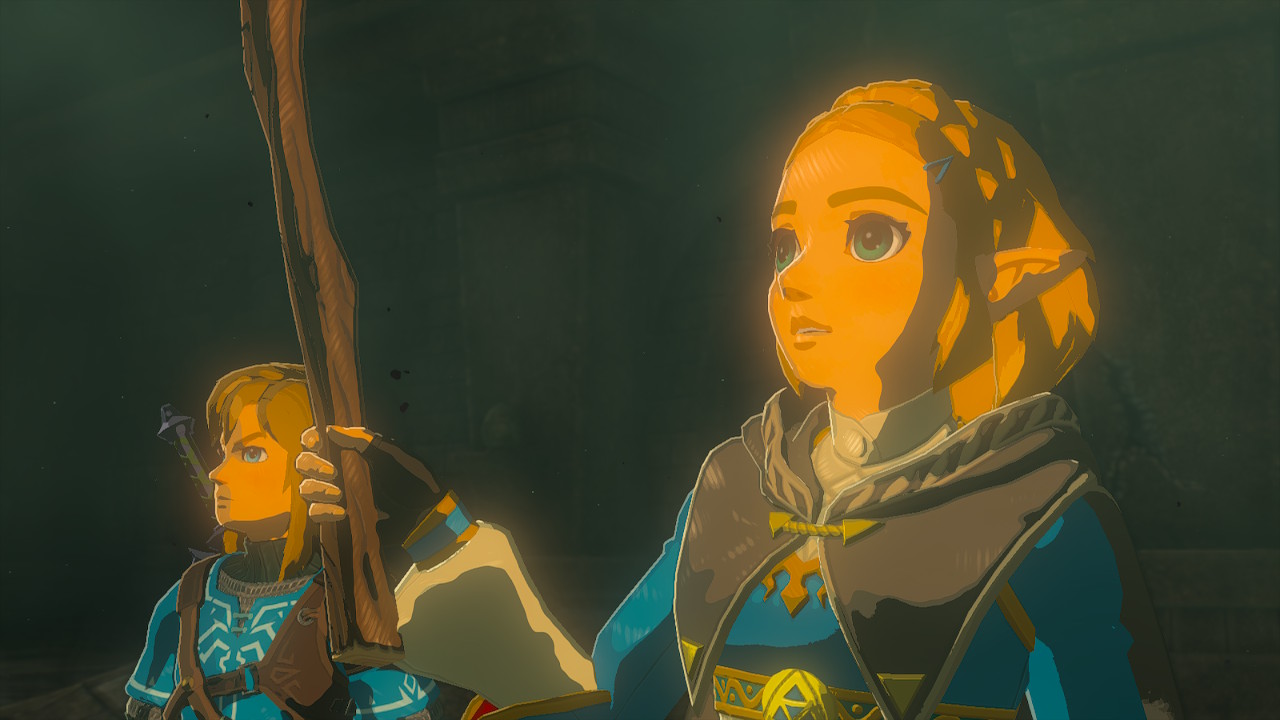
Tears of the Kingdom opens with Link and Zelda exploring the undercroft beneath Hyrule Castle. While Calamity Ganon may have been defeated at the end of Breath of the Wild, the kingdom isn’t yet at peace, and the pair are investigating reports of a toxic cloud seeping up through the palace.
They come across a mural in a hidden chamber that tells the story of the Zonai, an advanced race descended from the gods who arrived in Hyrule millennia before, where one of their number, Raaru, became the land’s first king. Raaru fought someone called The Demon King in The Imprisoning War, but the story cuts off because a rockpile obscures the last panels of the mural.
Link and Zelda take a staircase still deeper and find a large cavern containing the source of the toxic gloom: a mummified corpse hanging in the air, impaled with a magical green gauntlet. As the pair approach, the mummy awakens and attacks. The monster wraps itself around Link’s blade, the Master Sword, shattering it into fragments before incinerating the hero’s arm. Zelda falls into the chasm below, and Link loses track of her. Before the monster can kill him, the gauntlet teleports him away.
Link awakens to find the world he knows torn apart. Hyrule castle now floats over a great chasm in the earth, and mysterious islands float ominously in the sky. Holes have opened up in the ground, leading down to a vast darkness-wrapped land beneath Hyrule filled with toxic gloom and strange creatures.
Not all is lost, though; the gauntlet that saved Link begins to speak and leads him on a quest to find Princess Zelda, leading him to the four corners of Hyrule, where he’ll discover ancient elemental temples and allies in the fight against the ancient evil.
Out with the old
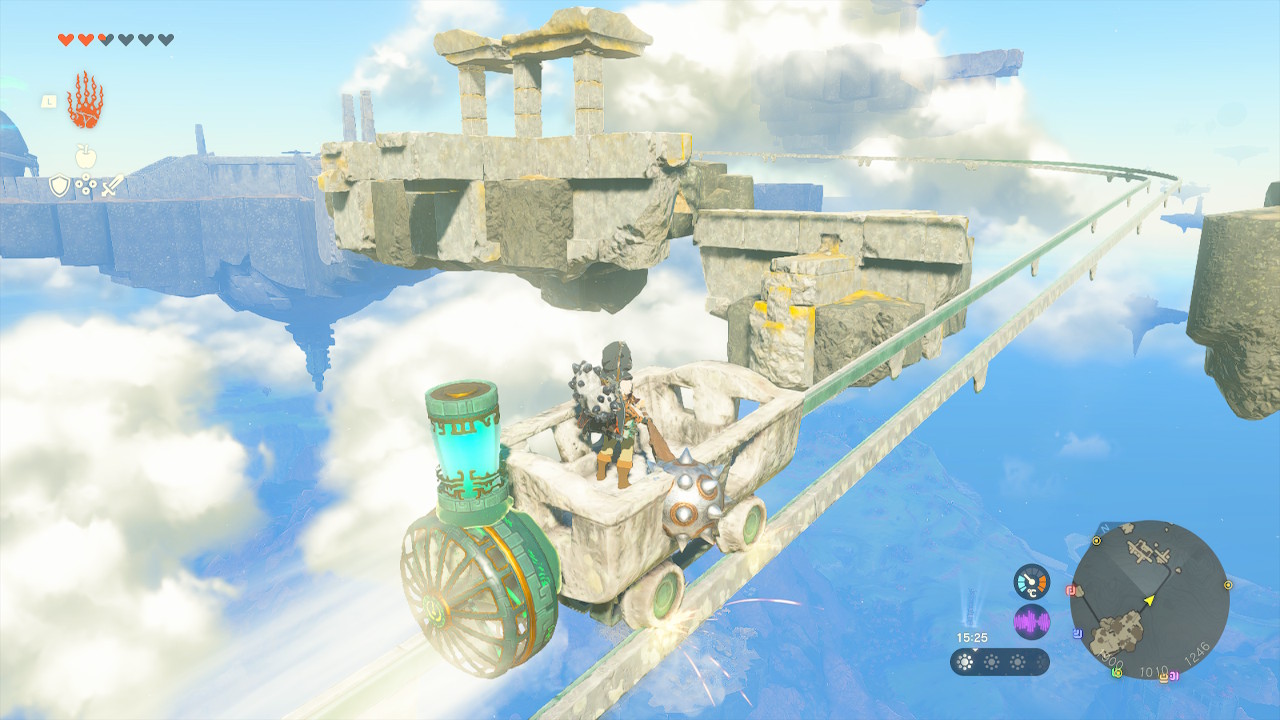
Breath of the Wild’s developers threw out and changed anything they felt wasn’t essential to a Zelda game. In the process, they made the 30-year-old series into a physics and chemistry-driven open-world sandbox, one where you could light an arrow on a stove, shoot it into long grass and start a fire that would spread and create an updraft of hot air that you could ride skyward on your paraglider. That same engine powers Tears of the Kingdom, but you have a whole new evolution of tools to stir the sandbox's sands.
You can no longer use your Sheikah Slate to summon time bombs or create ice blocks from pools of water. Instead, you have a new range of abilities, such as traveling vertically through solid materials, like a salmon up a waterfall. You can also pause time and select an object to reverse. You can use the power to rewind the motions of a cog in a machine, switching the direction of an elevator, say, or sending the boulder an enemy has thrown at you right back to where it came from.
But the implications of those powers are minor compared to Fuse and Ultrahand. With Fuse, you can weld objects and items to your weapons and shields, grafting the item's attributes onto your gear. While seemingly straightforward, this ability harnesses the chemistry engine underpinning Tears of the Kingdom. Fuse the horn of a fire-breathing Lizalfos to your spear, and now you won’t just impale your enemies; you’ll light them on fire, too.
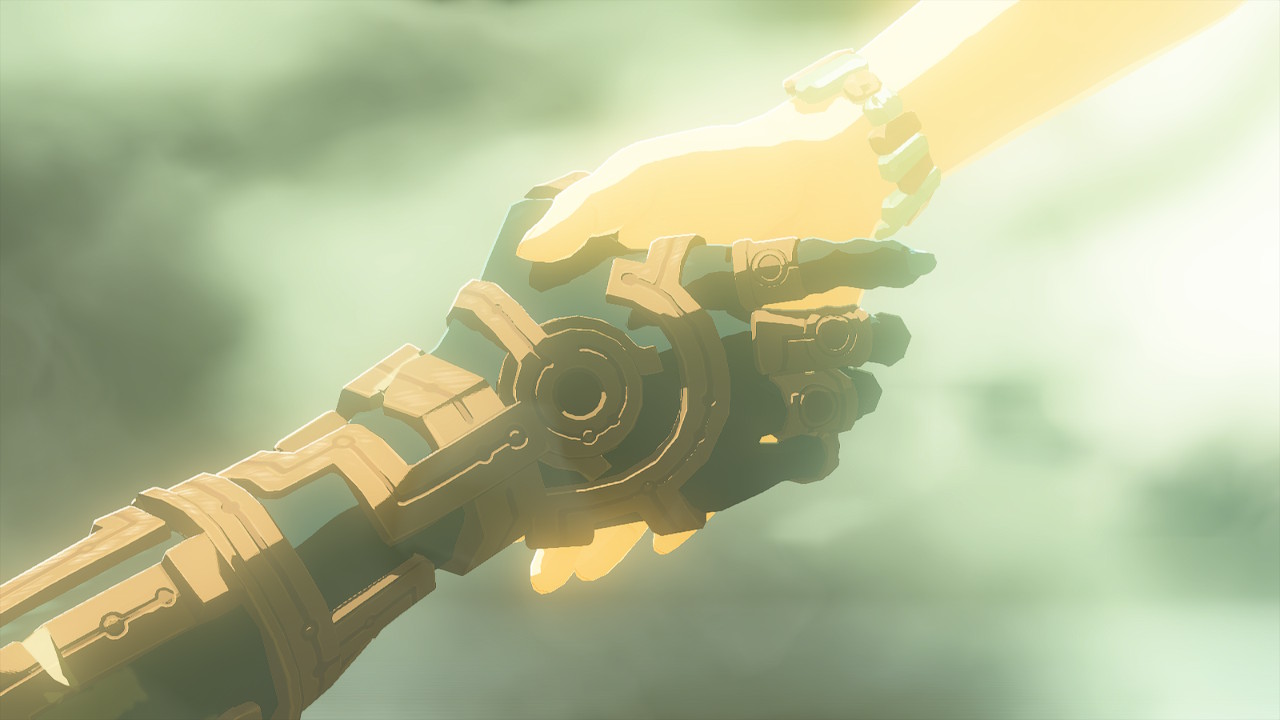
With a bit of experimentation, you can create an arsenal of weapons that burn, zap, and freeze your foes. You can fuse items to your arrows, too, turning them into homing arrows, bomb arrows or, with the help of a flower found in the caverns under Hyrule, an arrow that will turn your enemies against each other.
You can fuse armor plating to your shield to strengthen them or add a briar of thorns that damage enemies as you block their assaults. Though, my favorite fusion is perhaps the simplest: if you weld a Zonai rocket to a shield and block with the ZL button, the missile launches you into the air, acting like one of NASA’s boosters.
Ultrahand allows you to levitate objects in the world, lifting great stone blocks like they were balls of paper, and weld them together to create complex entities. Loose wheels and planks come together to make a cart you can ride down a hill, wooden boards become a long bridge to cross a canyon, and shipping crates stack to create a ladder to climb out to the roof of a building. While a little fiddly to control at first, the power becomes an essential tool for mastering your environment.
Ultrahand brings Tears of the Kingdom to life when you start discovering Zonai devices. They can be simple components, like a glider wing, battery pack, or sledge or more complicated, like a fan, flame emitter, or spring-loaded cannon. In your (ultra) hands, you can weld a fan to a plank and turn it into a makeshift hovercraft, stick a balloon on a flame emitter onto a wooden board and build a hot air balloon, or strap rockets to a sledge and make, well, I’m not sure what you’d call it but it’s a lot of fun to ride.
Breaking and entering
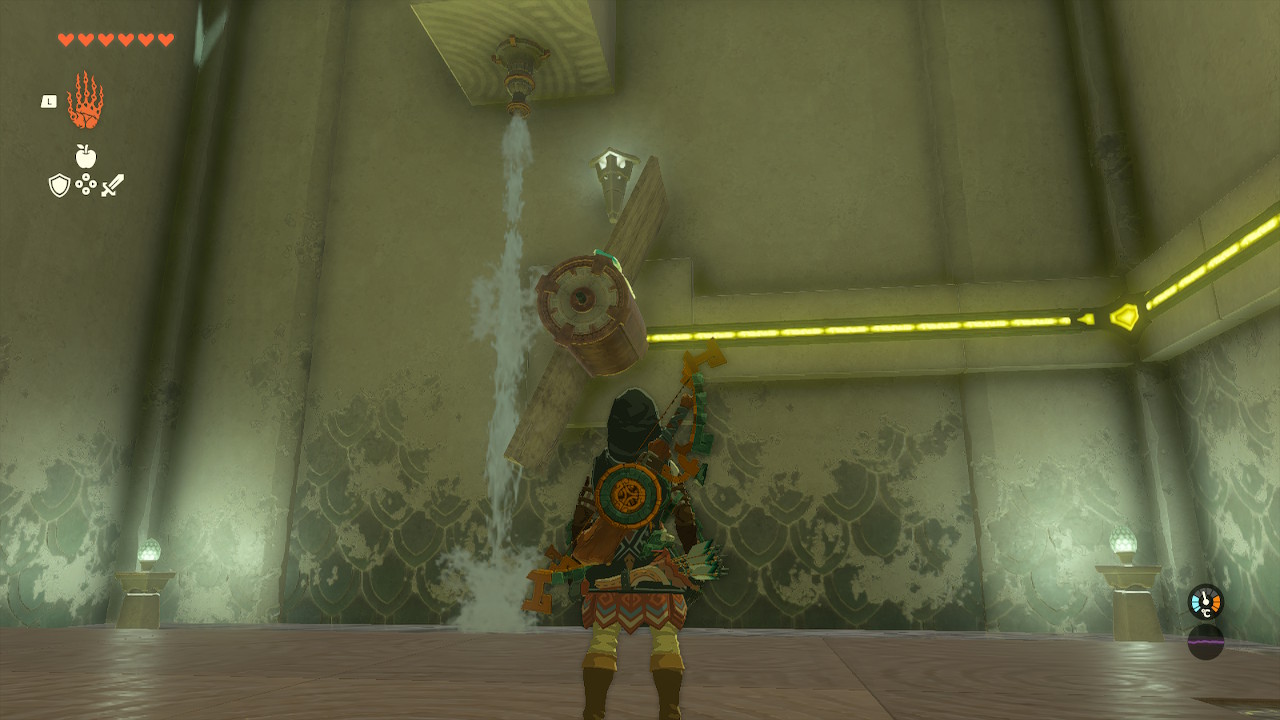
In temples and shrines, you use Zonai devices to build machines that solve specific problems, learning how the objects interact with the physics of the sandbox. Completing the set of puzzles threaded through each of Tears of the Kingdom’s five temples left me walking around my flat believing I had the most giant brain in the world and that I should have been an engineer. It’s like making the key to fit a specific lock. Out in Hyrule, however, you can use Zonai machines more like a crowbar.
I needed to reach an island floating in the skies high above Rito Village. It was far too high for me to climb, and even if I could get to the top, an overhang would prevent me from reaching the top. I’d simply fall back down to the mountain below. I knew there must be a route I was meant to use to get to the island; I just couldn’t see what it was. Rather than try and puzzle it out, though, I went through my inventory and found the Zonai devices I needed.
I later realized I could just have used my Ascend ability to travel up to the island, but I wasn’t even annoyed with myself...
I didn’t have a flame emitter, but I had a balloon and a wooden board to use as a basket. I had a flint and a pile of wood in my knapsack, so I dropped those on the board and struck the flint with my sword, which lit the wood, which inflated the balloon, which floated me almost all the way up to the island. Never missing an opportunity, I strapped a rocket to my shield and launched myself from the jury-rigged hot air balloon, giving me the height to glide down to the island.
I later realized I could just have used my Ascend ability to travel up to the island, but I wasn’t even annoyed with myself because Nintendo had given me the tools to break its world open and play how I wished.
Much like the world of Hyrule, the powers in Tears of the Kingdom are reminiscent of Breath of the Wild but now have many more layers and much greater depth.
One drawback of this new technology is that it puts the Nintendo Switch under a lot of pressure. In particular, when facing Yiga clan camps in the depths beneath Hyrule. Those pesky ninjas battle you with complicated Zonai vehicles, and all of the simultaneous calculations can cause severe framerate drops. I didn’t mind these occasional drops and saw them more as a hint of the battle to come, but you may disagree if a rough framerate will break your immersion.
Battle with the elements
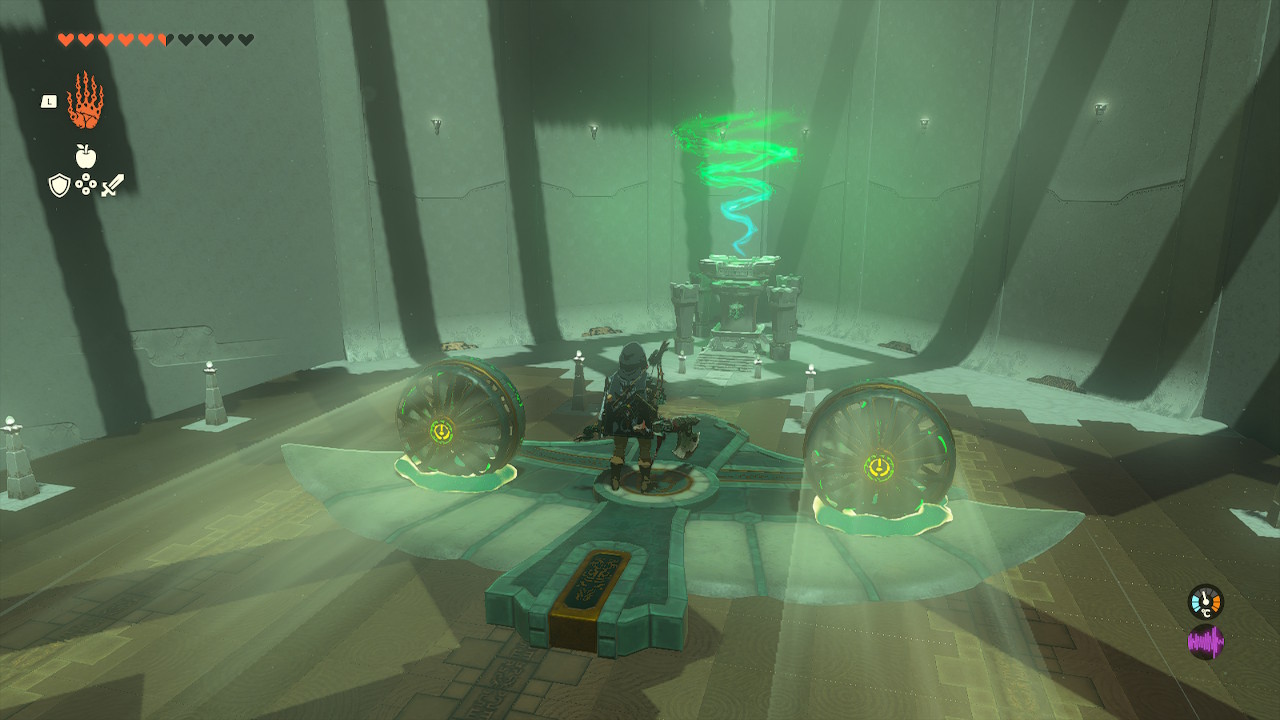
Tears of the Kingdom’s new tools organically build on Breath of the Wild’s combat. Your basic moves remain the same, attack with Y, hold the button down to charge your attack; lock onto your target and shield yourself with ZL; sidestep and backflip with X; and well-timed dodges are rewarded with a chance to counter your enemies’ attacks. But now, all those moves are twinned with weapons you can fuse with elemental attributes.
You can brute force your way through combat encounters, arming yourself with the biggest sword in your arsenal and swinging it until every enemy around you is dead, but you can bring a fight to a much swifter end by pairing your weapon with the weakness of your enemy. Hit fire enemies with ice weapons, unarmored enemies with lightning weapons, and sentient rocks with a stone hammer to smash them into dust.
The combat in Tears of the Kingdom is emblematic of the sequel’s improvements over Breath of the Wild. The bones of the games are the same, but everything has more meat to it than before. The world of Hyrule, the combat, and the powers at your disposal all start from where Breath of the Wild left off, but Nintendo has leapt them forward with clever enrichments.
The multi-leveled world wouldn’t be as enjoyable to explore without the new vehicles you can build, the combat would feel stale if not for the elemental fusions you can now play with, and the powers we mastered in the last game wouldn’t match the scale of the new Hyrule Nintendo has built, but what we have in Tears of the Kingdom is recognizably similar to the Sheikah Slate’s abilities.
As Majora’s Mask was to Ocarina of Time, The Legend of Zelda: Tears of the Kingdom is a masterful evolution of the Nintendo Switch’s launch title and, if it does end up being the last major release for the console, a fitting bookend for Nintendo’s greatest system to date.







